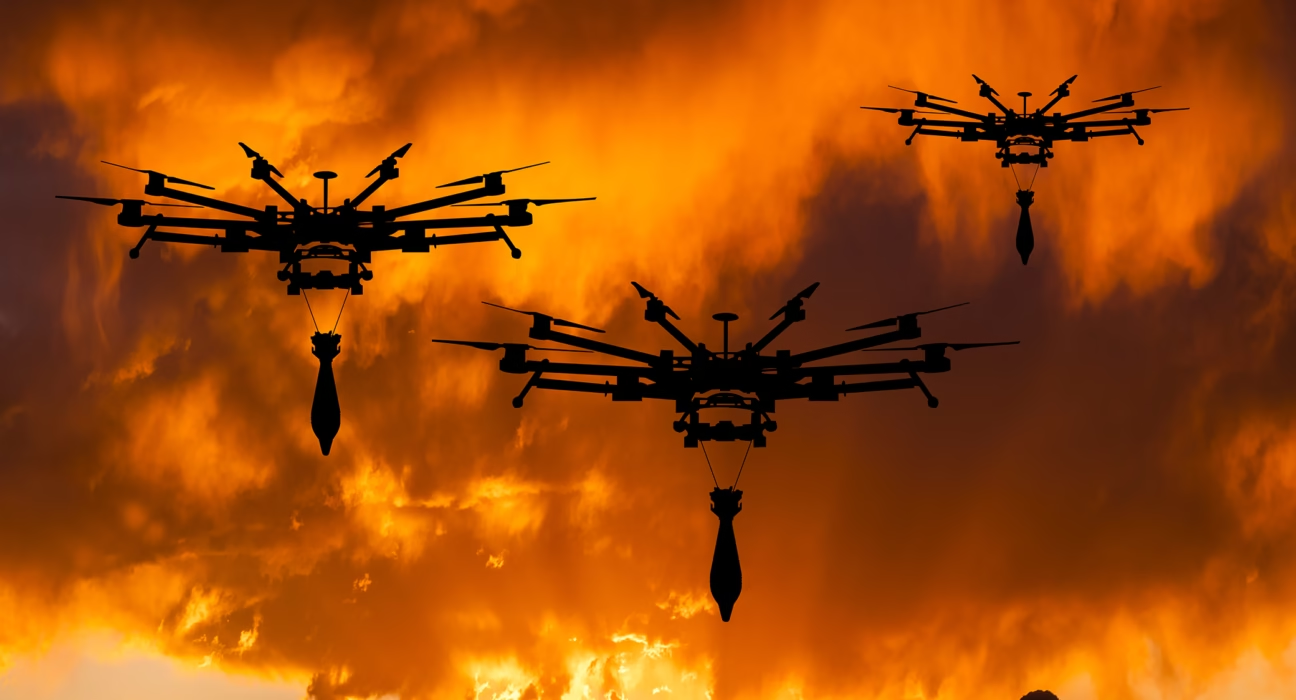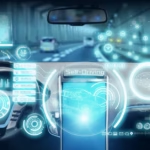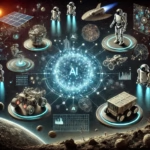Unpacking the Power: Exploring Explosive AI Drone Technology
Estimated reading time: 8 minutes
Key Takeaways
- Explosive AI drone technology signifies the rapid, transformative integration of AI into drones, enabling unprecedented autonomy.
- AI is the core driver of advanced drone automation with AI, enabling capabilities like autonomous navigation, obstacle avoidance, and intelligent data collection.
- Key applications are being revolutionized across diverse sectors, including AI in aerial mapping and the development of AI-powered delivery drones.
- Defining the best AI-powered drones involves looking at onboard processing, sensor fusion, level of autonomy, and sophisticated AI capabilities.
- Recent advancements in challenging environments, particularly military contexts, highlight the significant and sometimes profound impact of AI integration, enabling enhanced targeting and resilience against countermeasures.
Table of contents
- Unpacking the Power: Exploring Explosive AI Drone Technology
- Key Takeaways
- What is AI Drone Technology?
- The Core of Progress: Drone Automation with AI
- Transforming Industries: Key Applications of AI-Powered Drones
- Defining the Best AI-Powered Drones
- The Cutting Edge: AI Drone Technology in Challenging Environments (Leveraging Research Findings)
- Future Outlook for AI-Powered Drones
- Conclusion
- Frequently Asked Questions
The term explosive AI drone technology might sound dramatic, but it accurately captures the incredible pace and transformative nature of integrating Artificial Intelligence with unmanned aerial vehicles (UAVs). This synergy is unlocking capabilities that were science fiction just a few years ago, enabling unprecedented levels of autonomy, efficiency, and effectiveness across a vast spectrum of applications. AI is fundamentally changing what drones can do across various sectors, making their advancements “explosive” in terms of impact and speed. They are moving beyond simple remote-controlled flight to become intelligent, self-directed agents capable of complex tasks.
This post will delve into the heart of this revolution, exploring exactly how AI is reshaping the drone landscape. We’ll cover foundational concepts like drone automation with AI, examine critical applications such as AI in aerial mapping and the emerging field of AI-powered delivery drones, and discuss what characteristics define the best AI-powered drones currently available or under development. Our purpose is to provide a clear, informational overview that satisfies the search intent of anyone seeking to understand the rapid and impactful advancements in this fascinating technological area.

What is AI Drone Technology?
At its core, AI Drone Technology refers to the integration of Artificial Intelligence capabilities directly into the drone system. This moves drones far beyond simple remote control or pre-programmed GPS navigation. Instead of merely following commands, AI-powered drones are equipped with the intelligence needed to interact with their environment dynamically.
This intelligence is manifested through several key abilities: they can perceive their surroundings using sophisticated sensors like high-resolution cameras, LiDAR, thermal imagers, and radar; they process this influx of complex data in real-time using powerful onboard processors; they make autonomous decisions based on advanced algorithms and machine learning models, often without direct human intervention; and they execute intricate tasks that require adapting to changing conditions.
This stands in stark contrast to traditional drones, which rely heavily on a human pilot for real-time control and precise maneuvers, or simple waypoint navigation systems that follow a rigid path. AI provides the flexibility and cognitive ability needed for complex operations in dynamic environments. This embedded intelligence is the fundamental foundation for significant progress in drone automation with AI, which we’ll explore next. It represents a paradigm shift from drones as mere flying cameras or cargo carriers to drones as intelligent, autonomous agents.

The Core of Progress: Drone Automation with AI
Artificial Intelligence is the undeniable driving force behind enhanced drone automation. It’s what allows drones to perform increasingly complex tasks with minimal or no human oversight, dramatically expanding their potential applications and efficiency. AI doesn’t just automate simple flight; it automates *decision-making* during flight and task execution.

Here are specific ways AI improves drone automation:
- Autonomous Navigation: AI enables drones to plan and execute complex flight paths autonomously, navigating challenging environments like urban canyons, dense forests, or industrial facilities. More impressively, AI allows them to adjust these routes in real-time, responding instantly to detected obstacles, no-fly zones, or changing weather conditions without needing constant human input.
- Obstacle Avoidance: While some traditional drones have basic obstacle sensors, AI-powered computer vision combined with data fusion from multiple sensors (like radar and LiDAR) allows drones to not only detect but *intelligently* classify and avoid obstacles. They can distinguish between a temporary object (like a bird) and a permanent structure (like a wire), making sophisticated avoidance decisions to maintain safety and complete their mission.
- Automated Data Collection: Instead of simply flying a grid pattern, AI can direct the drone’s sensors (cameras, thermal imagers, multispectral sensors) to actively focus on specific areas of interest based on visual cues or pre-set parameters. AI can automatically identify specific objects (e.g., damaged solar panels, crop infestations, structural defects), track moving targets, and ensure that comprehensive data is captured efficiently and accurately, significantly reducing the need for manual data sorting later.
- Task Execution: AI allows drones to perform precise and complex tasks autonomously. This includes automated, pinpoint landings even on moving platforms, maintaining a stable hover for detailed inspection of a specific point, accurately following a moving target while maintaining optimal distance and angle, or even interacting with the environment using robotic arms or specialized tools.
This enhanced level of drone automation with AI is key to unlocking new applications and efficiencies that were previously impossible or cost-prohibitive, setting the stage for the widespread adoption of AI-powered drones across industries.
Transforming Industries: Key Applications of AI-Powered Drones
The advent of explosive AI drone technology is not confined to laboratories or theoretical discussions; it is actively creating new possibilities and fundamentally changing workflows across numerous industries today. AI-powered capabilities are making drones indispensable tools for tasks ranging from mundane monitoring to critical inspections and rapid deliveries.
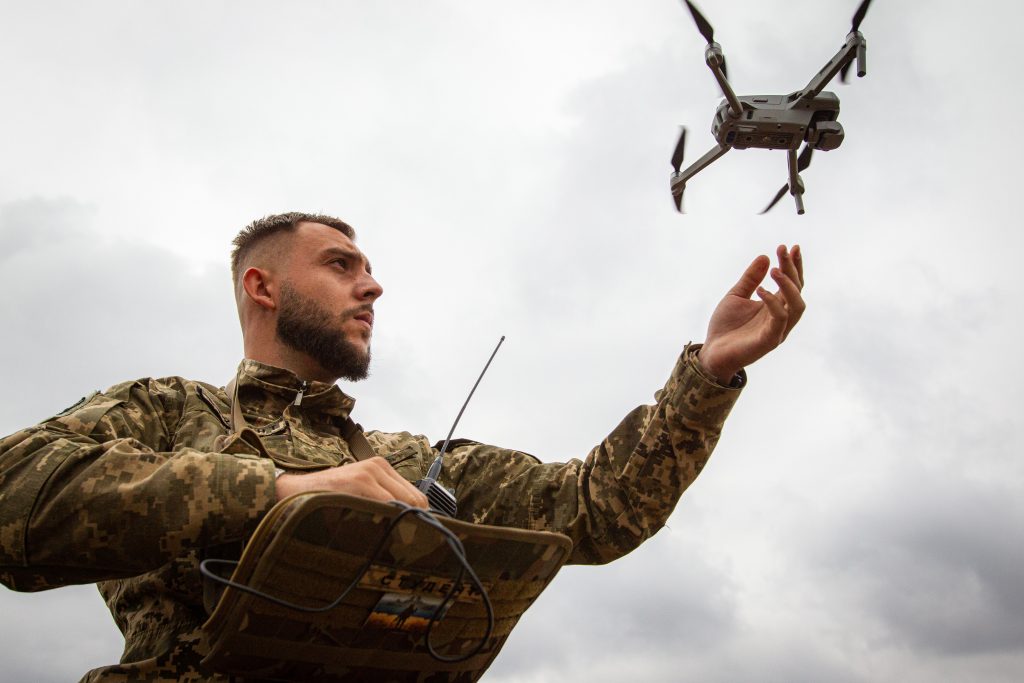
AI in Aerial Mapping and Surveying
The fields of aerial mapping and surveying are experiencing a significant boost in efficiency and accuracy thanks to AI. AI algorithms improve the entire process, from flight planning to data processing. Drones equipped with AI can automatically plan optimal flight paths over complex or irregular terrain, ensuring complete coverage while minimizing flight time and battery usage. Once the data is captured, often involving thousands of high-resolution images, AI takes over the laborious task of processing. It can quickly and accurately identify specific features within the imagery, such as different types of crops, infrastructure defects like cracks or erosion, geological formations, or property boundaries. AI can then autonomously generating detailed 2D maps or 3D models from this vast dataset, a task that would take human analysts significantly longer. This level of automation ensures more consistent data capture, reduces post-processing time dramatically, and lowers the overall cost of surveying large areas.
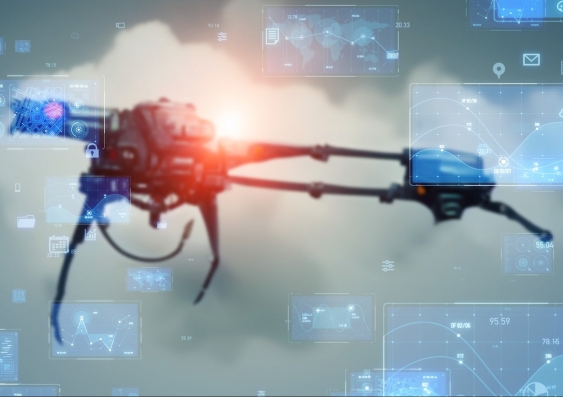
The Rise of AI-Powered Delivery Drones
While still facing regulatory hurdles and logistical challenges, the concept of drone delivery is becoming viable largely due to AI. AI is absolutely critical for the functionality and scalability of AI-powered delivery drones, especially in complex environments like populated urban or suburban areas. AI enables autonomous navigation through these challenging spaces, requiring the drone to constantly identify and avoid obstacles such as buildings, trees, power lines, and even moving vehicles or pedestrians. It facilitates real-time route optimization, allowing the drone to dynamically adjust its path to bypass unexpected congestion or temporary flight restrictions. Furthermore, AI is essential for safe and precise package handling, powering automated mechanisms for secure pickup and gentle drop-off, and ensuring accurate autonomous landing procedures directly at the designated delivery spot. AI also plays a crucial role in integrating drones into complex airspace management systems, ensuring they adhere to regulations and communicate effectively with air traffic control systems, whether automated or human-managed.
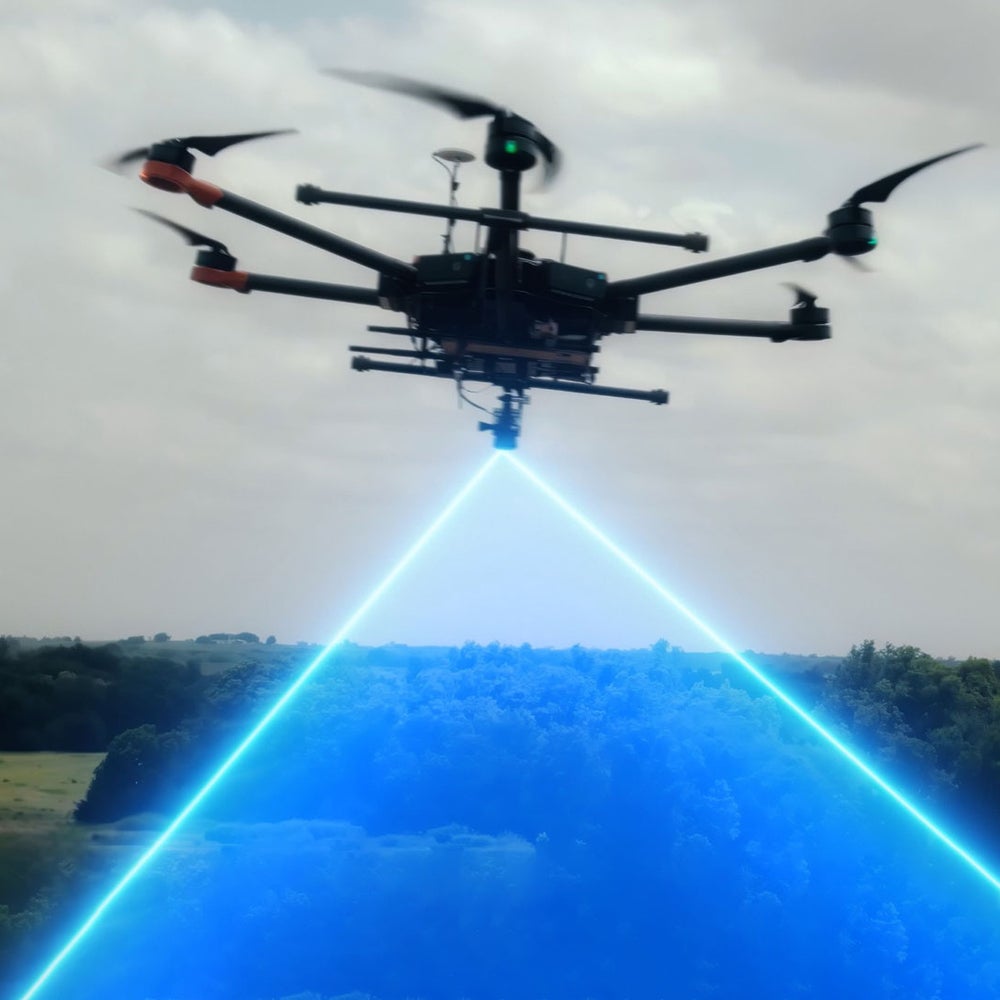
Other Civilian Applications Enhanced by AI
Beyond mapping and delivery, AI is significantly boosting the capabilities of AI-powered drones in several other civilian sectors:
- Surveillance & Security: AI transforms surveillance drones from mere recording devices into intelligent sentinels. They can autonomously patrol designated areas, use computer vision to identify anomalies, recognize specific objects (like vehicles or intruders) or behaviors, and even autonomously track targets while alerting human operators. This drastically increases the effectiveness and coverage of security operations.
- Infrastructure Inspection: Inspecting large, dangerous structures like bridges, wind turbines, transmission towers, or pipelines is made safer and more efficient with AI. Drones can fly pre-programmed or autonomously generated paths to get close-up views, while AI analyzes the captured visual, thermal, or multispectral data to automatically detect and highlight potential faults, cracks, corrosion, or other defects that might be missed by human inspectors or require extensive manual analysis.
- Agriculture: In precision agriculture, AI-powered drones equipped with specialized sensors can fly over fields and analyze crop health by processing multispectral or thermal imagery. AI models can identify areas affected by pests, diseases, or nutrient deficiencies often before they are visible to the naked eye. This allows farmers to apply treatments more precisely, reducing waste and improving yields.
- Search and Rescue: AI can assist search and rescue operations by analyzing thermal or visual imagery from drones to identify heat signatures (people or animals) or specific objects in difficult terrain or disaster zones, significantly speeding up search efforts.
In essence, AI makes these tasks more efficient by automating data acquisition and analysis, more accurate by reducing human error and enabling sophisticated data processing, and often significantly safer by allowing drones to handle operations in hazardous environments. This comprehensive application across sectors demonstrates the widespread impact of drone automation with AI.
Defining the Best AI-Powered Drones
When considering the “Best AI-powered drones,” it’s less about a single model and more about the *sophistication and integration* of the AI capabilities relative to the drone’s intended purpose. Since specific drone models evolve rapidly, focusing on the core technological features that enable high-performing AI functions provides a more enduring definition. The “best” drone is one whose AI is robust and tailored for the complex autonomous tasks it needs to perform.

Here are the key AI-related features and characteristics to evaluate:
- Onboard Processing Power: True AI autonomy requires significant computational resources *on the drone itself*. The best AI-powered drones possess powerful onboard processors (often specialized AI chips) capable of running complex AI models in real-time. This allows for instantaneous decision-making for tasks like computer vision analysis, navigating obstacles, and executing maneuvers without relying on a constant, high-bandwidth connection to a ground station or external cloud processing, which can be unreliable or suffer from latency.
- Sensor Integration & Fusion: A drone’s understanding of its environment is only as good as the data it receives. High-quality AI drones seamlessly integrate data from multiple sensors – cameras (visible light, thermal, multispectral), LiDAR, radar, acoustic sensors, GPS, Inertial Measurement Units (IMUs), etc. More importantly, they use AI algorithms for *sensor fusion*, combining the data from these diverse sources to create a more complete, reliable, and nuanced understanding of the surrounding environment than any single sensor could provide. This fused data is critical for accurate perception and decision-making.
- Level of Autonomy: The “best” level of autonomy depends entirely on the application. It can range from *supervised autonomy*, where AI provides recommendations or executes initial steps but requires human approval for critical decisions, to *full autonomy*, where the AI makes decisions and executes complex tasks independently within a defined operational envelope. For some applications like search and rescue or inspection, supervised autonomy might be optimal for safety, while for others like automated mapping or routine deliveries, higher levels of autonomy are key to efficiency. The “best” AI drone offers the appropriate level of autonomy for its intended use case.
- Computer Vision & Machine Learning Capabilities: The sophistication of the AI models is paramount. This includes advanced object recognition and classification (distinguishing between different types of vehicles, people, animals, structures), tracking (“pixel lock” capabilities that keep a target centered even if the drone or target is moving), scene understanding (interpreting the overall context of the environment), and increasingly, the ability to learn and adapt from new data or experiences, even if this adaptive learning is currently basic or confined to specific tasks based on current research limitations.
- Adaptability & Resilience: The environment drones operate in is often unpredictable. The “best” AI helps the drone perform reliably in challenging conditions. This includes robust performance in varying light conditions (day, night, shadows), GPS-denied or degraded environments (using visual-inertial odometry or other methods for navigation), and the ability to resist or adapt to electronic warfare or jamming attempts that might disrupt communication or navigation signals.
Ultimately, the best AI-powered drones are those whose AI capabilities are not just present, but are deeply integrated, robust, and specifically tailored to enable the drone to perform its intended complex autonomous tasks effectively, safely, and reliably in real-world conditions. This goes beyond simple features and speaks to the maturity and performance of the AI system itself.
The Cutting Edge: AI Drone Technology in Challenging Environments (Leveraging Research Findings)
Perhaps the most striking examples of truly explosive AI drone technology advancements are witnessed when drones are deployed in complex, dynamic, and often adversarial conditions. While civilian applications showcase AI for efficiency and safety, environments like modern warfare highlight the profound, sometimes challenging, implications of AI integration at the very edge of technological capability. The conflict in Ukraine, for instance, has become a crucible for rapid innovation in this space. The integration of AI with drone technology has indeed ushered in a new era, creating systems with increasing autonomy and effectiveness, with significant implications witnessed in areas like Ukraine. This is where we see AI pushing the boundaries of what autonomous systems can achieve under pressure.
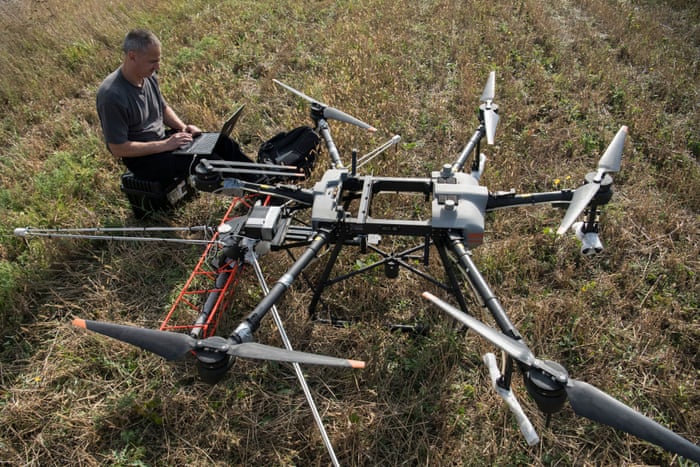
Research and reports from these challenging environments demonstrate how AI-enhanced military drone systems are becoming significantly more effective. These systems leverages massive datasets for sophisticated autonomous capabilities combined with human expertise, moving beyond simple remote piloting to integrated human-machine teaming.
Specific Examples from Research
- Reports indicate that low-cost FPV drones in Ukraine being enhanced with AI modifications costing as little as $100-$200 per unit. This highlights the accessibility and rapid deployment potential of basic AI capabilities.
- These inexpensive AI models primarily use computer vision to identify and lock onto targets with precision, a crucial ability in dynamic combat scenarios.
- A Ukrainian pilot was quoted describing the capability: “The AI captures the target and guides the drone directly to strike it.” This starkly illustrates the shift from manual control to autonomous guidance.
- This capability transforms standard drones into semi-autonomous systems capable of maintaining target locks even when human communication is disrupted by jamming or signal loss, significantly increasing their operational resilience.
Loitering Munitions (Kamikaze/Suicide Drones) and AI Targeting
AI is also integral to the effectiveness of Loitering Munitions, often referred to as Kamikaze or Suicide drones. Systems like Russia’s KUB-BLA, for example, are designed to search for targets autonomously. These drones which can travel up to 80 mph, maintain flight for up to 30 minutes, deliver explosive payloads (~7 lbs), and identify targets using AI. More advanced versions possess extended dwell times, sometimes up to six hours, and can actively detect, classify, and attack targets independently using their onboard sensors and AI processing, representing a significant step towards full autonomous targeting systems (Source: kstatelibraries.pressbooks.pub). This capability fundamentally alters battlefield dynamics, allowing for persistent surveillance and rapid, precise strikes without continuous human control once the system is launched and given parameters.

Strategic Advantages & Battlefield Implications derived from AI
The integration of AI provides critical strategic advantages and shapes battlefield implications:
- AI-driven autonomy increases resilience against countermeasures designed to disrupt communication/navigation, such as electronic jamming or GPS spoofing. By processing data onboard and making decisions locally, the drone can continue its mission even if communication with the operator is lost.
- This leads to a significant shift from direct human control to human oversight. Operators become supervisors, setting mission parameters and monitoring progress, rather than constantly piloting the drone, freeing them up for higher-level strategic tasks.
- Technologies like “pixel lock” technology supporting high-precision tracking despite jammed signals ensure that once a target is identified, the AI can keep the drone locked onto it using visual data, bypassing electronic countermeasures aimed at disrupting navigation signals.
- Ukrainian experts predict that the proliferation of autonomous drones might limit heavy armor movement near front lines in the future, as low-cost, AI-targeted systems become a significant threat to expensive vehicles. This is a potential long-term implication of this technological shift.
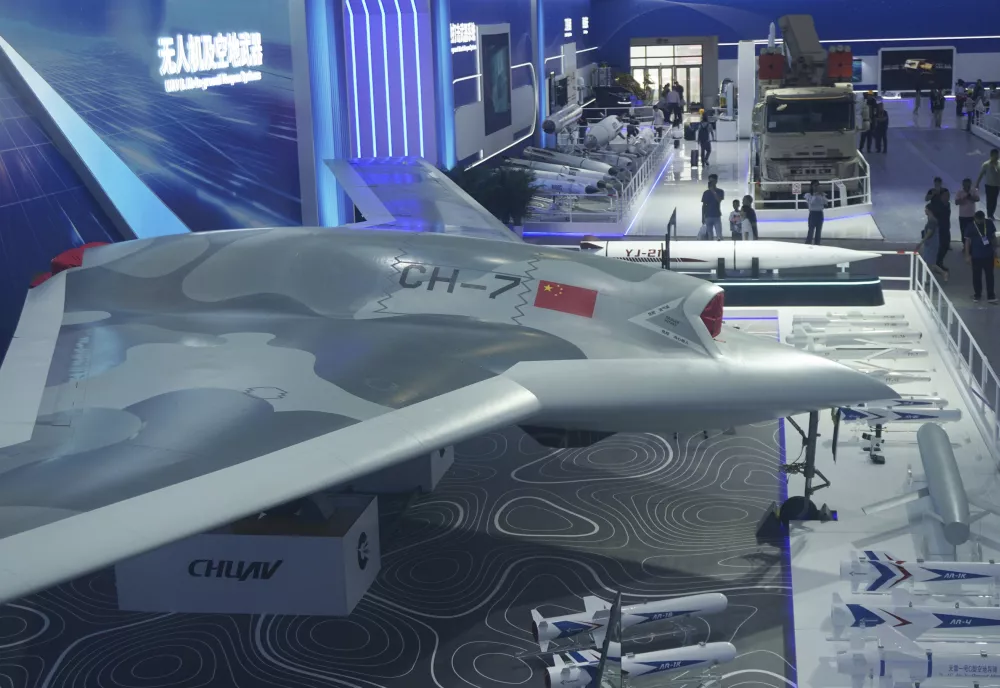
Countermeasures & Electronic Warfare
The push for AI integration is partly a response to the sophisticated electronic warfare capabilities being employed. As Ukraine’s deputy defense minister was quoted, AI integration is partly motivated by overcoming jamming efforts. The ability of a drone to continue its mission using AI for navigation and targeting when radio signals are blocked is a significant advantage. Fedir Martynov, quoted in research, emphasizes “last-mile targeting with AI” as the frontier against Russian jamming efforts, indicating that maintaining target lock and executing the final strike autonomously is a key focus for future development and overcoming current countermeasures.
Current Limitations and Future Development (as per research)
Despite the rapid progress, current AI implementations in these contexts have limitations:
- Research notes that current implementations are often limited to basic object recognition/tracking, not yet advanced predictive systems that can anticipate targets’ movements or intentions based on complex environmental factors.
- However, ongoing development using machine learning and adaptive techniques are continuously improving capabilities and targeting accuracy, enabling drones to learn from new data and perform better over time.
- There is also ongoing development of regulatory frameworks to standardize adoption of these systems, recognizing the ethical and legal complexities introduced by lethal autonomous weapons systems, even if currently operating under human oversight.
These developments, while rooted in a challenging and somber context, undeniably highlight the profound and sometimes challenging impact of AI on the capabilities of AI-powered drones and the future of technology across all domains. They showcase AI as a critical enabler for operation in contested and unpredictable environments, driving the “explosive” label for this technology forward.
Future Outlook for AI-Powered Drones
The future trajectory of explosive AI drone technology points towards ever-increasing sophistication and autonomy. We can anticipate higher levels of autonomy, with drones capable of undertaking complex missions with minimal human intervention, managing unforeseen circumstances, and even collaborating with other drones or systems.
Concepts like swarm intelligence, where multiple drones coordinate their actions using AI for tasks like coordinated search patterns or complex surveillance, are moving from research labs to real-world applications. Enhanced sensor fusion, integrating an even wider array of data types, will give drones a more complete and nuanced understanding of their environment, improving decision-making accuracy.
More sophisticated decision-making capabilities will allow AI to handle complex ethical dilemmas (particularly relevant in military or security contexts, although civilian applications also raise privacy concerns) and navigate ambiguous situations based on learned patterns and rules.
However, this rapid advancement also necessitates careful consideration of the ethical implications raised by increased drone autonomy, particularly in light of the military applications discussed earlier. Questions around accountability, bias in AI models used for targeting or identification, and the potential for unintended consequences are paramount and need robust regulatory frameworks. Ethical considerations raised by increased drone autonomy will continue to be a major point of discussion and development alongside the technology itself.
Regardless of these challenges, the pace of innovation suggests continued “explosive” growth in drone capabilities enabled by AI. From automating tedious inspections to enabling entirely new services like urban air mobility or highly resilient surveillance, AI-powered drones are set to become even more integrated into our infrastructure and daily lives, pushing the boundaries of autonomous systems.
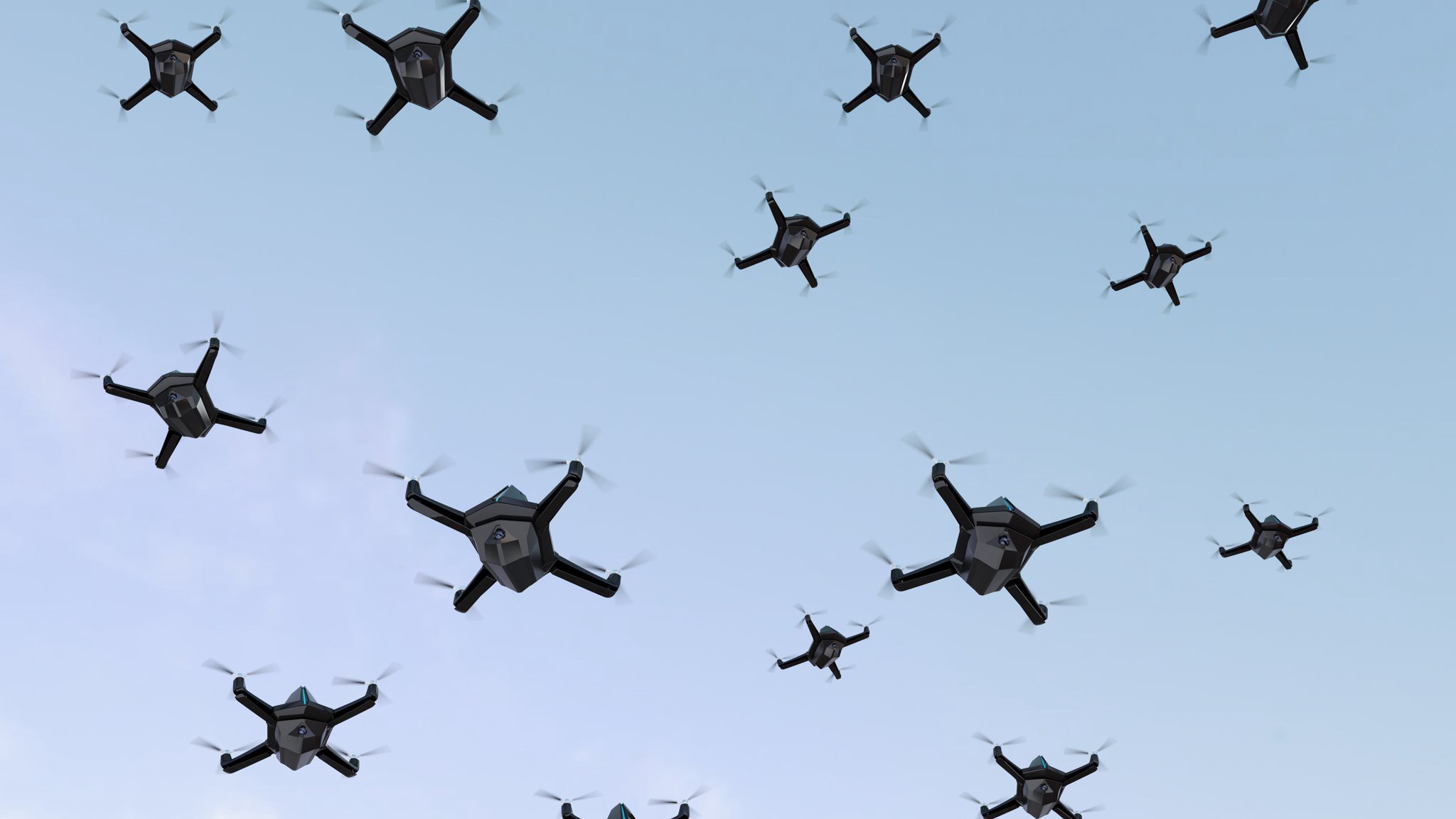
Conclusion
In summary, Artificial Intelligence is not just an add-on; it is fundamentally changing drones by enabling advanced drone automation with AI. This transformative integration is creating intelligent, autonomous systems far more capable than their predecessors.
We’ve seen the profound impact across diverse civilian applications, from making AI in aerial mapping more efficient and accurate, to paving the way for viable AI-powered delivery drones, and enhancing tasks in security, inspection, and agriculture. Simultaneously, the rapid advancements in challenging environments highlight the critical role AI plays in enabling resilient, precise operations, sometimes with significant global implications.
The development cycle is undeniably rapid, and explosive AI drone technology is creating exciting, and sometimes challenging, new possibilities for autonomous flight across nearly every conceivable domain. As AI continues to evolve, so too will the capabilities and widespread adoption of AI-powered drones, promising a future where autonomous aerial systems play an increasingly vital role.
Frequently Asked Questions
What makes AI drone technology “explosive”?
The term “explosive” refers to the incredibly rapid pace of development and the transformative impact AI is having on drone capabilities. It’s enabling drones to perform tasks with unprecedented levels of autonomy, efficiency, and intelligence across numerous sectors, far exceeding the capabilities of traditional, non-AI-powered drones in a very short timeframe.
How does AI improve drone automation?
AI provides drones with the ability to perceive, process information, and make decisions autonomously. This enables advanced automation features such as intelligent navigation around complex obstacles, automated identification and tracking of targets, optimized path planning in dynamic environments, and precise execution of tasks like automated landings or inspections, all without constant human control.
What are some key civilian applications of AI-powered drones?
Key civilian applications include highly efficient and accurate aerial mapping and surveying, the development of autonomous delivery services, intelligent surveillance and security monitoring, detailed infrastructure inspection, and precision agriculture for monitoring crop health. AI makes these tasks faster, more accurate, and often safer.
Are AI-powered drones being used in challenging environments like warfare?
Yes, AI is increasingly integrated into drone systems used in challenging environments, including military conflicts. This integration is aimed at enhancing autonomy, improving target identification and tracking (like “pixel lock”), increasing resilience against electronic warfare and jamming, and enabling systems like loitering munitions to operate with reduced human oversight, fundamentally altering battlefield dynamics.
What defines the “best” AI-powered drone?
The “best” AI-powered drone is defined by the sophistication and integration of its AI relative to its purpose. Key factors include powerful onboard processing, robust sensor fusion capabilities, the appropriate level of autonomy for the mission, advanced computer vision and machine learning algorithms, and the system’s overall adaptability and resilience in unpredictable environments.


